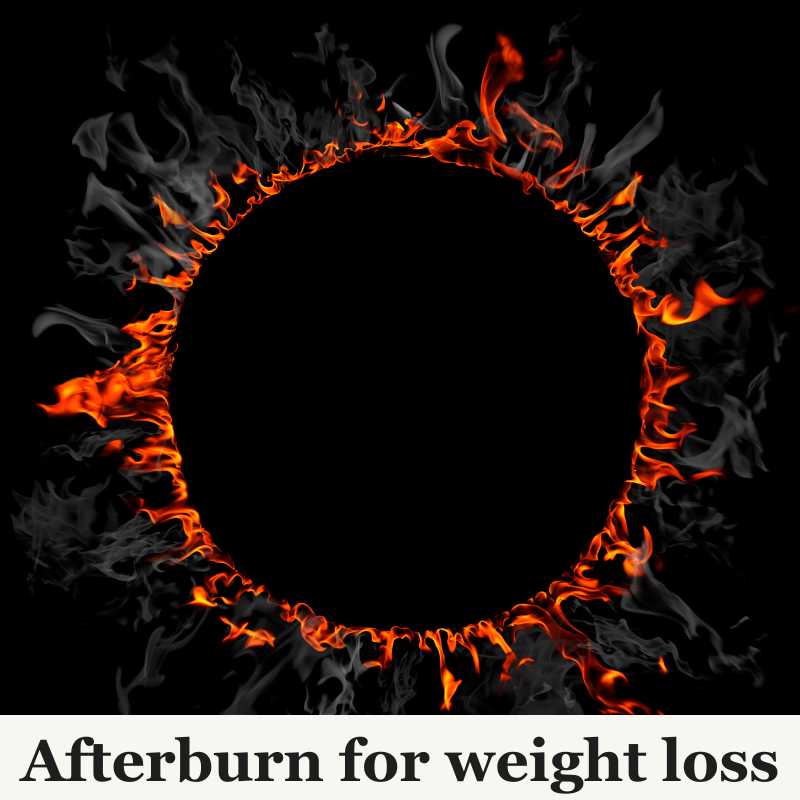The Hidden Afterburn: How to Torch Fat for Hours After Your Workout

We all experience different manifestations of weight loss plateaus and sluggishness. Stubborn belly fat remains despite healthy eating, calorie restriction, and exercise. Poor sleep and high stress become the norm in a cycle of perpetual, chronic fatigue and low energy. Why is it so hard to lose weight?
We blame age as the cause of our slow metabolisms, even though research shows metabolism remains stable well into our 60s. Between ages 30 and 60, when we adjust for fat-free mass-our metabolism shows no significant decline. The drop-off in metabolic rate only became notable after age 60, with a roughly 0.7% decline per year. This suggests that, absent major lifestyle changes, metabolism doesn’t inherently slow much between 30 and 60. Science 2021 (Pontzer et al.)
The weight loss industry fills our minds with the idea of quick fixes like fad crash diets, Ozempic like drugs, detoxes/cleanses and endless steady state cardio, like arduous treadmill running or ridiculous 1 hour boot camp sessions. There should be a better way? These methods show unsatisfactory long-term results and a poor response rate. A meta-analysis of 29 long-term weight loss studies revealed participants regain over half their lost weight within two years, and over 80% within five years. We need to use proven weight loss tools.
While many weight-loss strategies exist, the often-overlooked "Afterburn effect" could be the most effective. Excess post-exercise oxygen consumption (EPOC), also known as the increased oxygen consumption that follows a workout, leads to a higher rate of calorie burning by the body as it works to restore itself to its pre-exercise state.
The type of exercise and the intensity matters.
High-intensity muscle exertion demands extra oxygen for energy production. Increased muscle mass and exertion lead to energy debt. The body needs to use energy and calories to restore balance. More damage means a longer metabolic recovery time.
Repairing muscle, regulating hormones with body temperature and restoring oxygen levels while clearing lactate requires energy use and calories to restore balance. Intense exercise is like a tornado or hurricane causing damage and destruction to a city (your body). When it’s bad, it could take billions of dollars (calories) and weeks (1-2 days) to rebuild the infrastructure. Low -moderate exercise intensity is like a gust or brisk breeze, so less EPOC and fewer calories needed to restore balance.
Most people do too much of the wrong exercise. The 80/20 rule shows us that 20% of effort (high-intensity training) drives 80% of fat loss. A 15-minute HIIT session or a 20-minute strength workout with compound movements can create 80% of the calorie-burning effect of a 60-minute moderate exercise session. High-intensity interval training (HIIT) or heavy resistance training pushes your body to burn more calories, increase muscle mass, and boost metabolism long after the workout,
Guidelines
Strength training produces far longer and greater EPOC than steady state cardio. Lift heavy. Consider compound movements. The goal is 75-80% of your one rep max. Cuts the work out time down and uses far more muscles. Focus your energy on high-intensity, short-duration workouts to reap the most benefits. Basically, the biggest metabolic boost with less time spent, achieving more fat loss and better results overall.
Maximize your training with shorter, high-intensity workouts. Steady state cardio is great for cardiovascular health but for weight loss, it is inferior to sprinting or HIIT. All you need is 15-20 minutes.
Minimize rest periods. 30-60 second rest periods keep the heart rate elevated, increasing your EPOC.
Prioritize recovery during the EPOC window. Without adequate protein and sleep, weight loss will come to a standstill. 2-3 workouts a week should be all you need. Over training can kill EPOC.
For a substantial increase in EPOC, a workout plan that incorporates heavy lifting and then immediately transitions to either a HIIT or sprint interval session is highly effective. Intense workouts lead to greater fat burning afterward.
It can last 48 hours. Targeting 2-3 weekly workouts boosts resting metabolic rate, thus increasing calorie burn even when resting between sessions.
As fitness improves, EPOC increases. Although beginners experience less EPOC initially than trained people, consistent training speeds up weight loss through adaptation. People get discouraged in the beginning, not realizing crazy weight loss awaits around the corner.
End
The idea of a long workout and training like a maniac to lose weight seems like a false ideology. We work hard to see results, but working smarter seems simpler and easier to implement, plus maintain over the long run. Excess post exercise oxygen consumption not only burns calories after the workout but also increases your resting metabolic rate, speedily easing weight loss by melting body fat loss growing lean muscle mass. For short bursts of exercise, resistance training, HIIT, or sprint intervals are ideal. Step outside your comfort zone with your fitness routine, and you'll see incredible weight loss results.